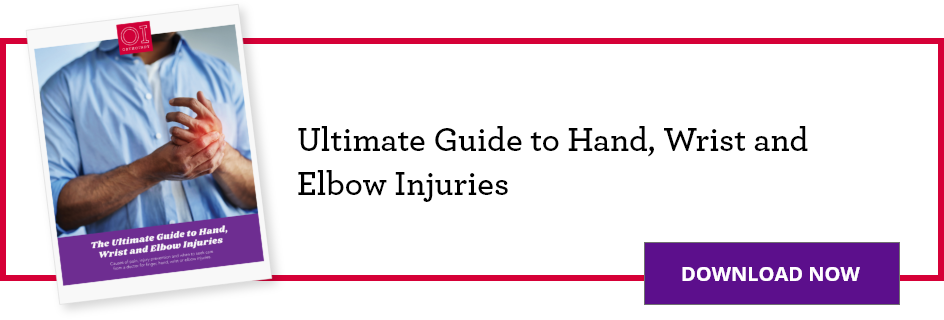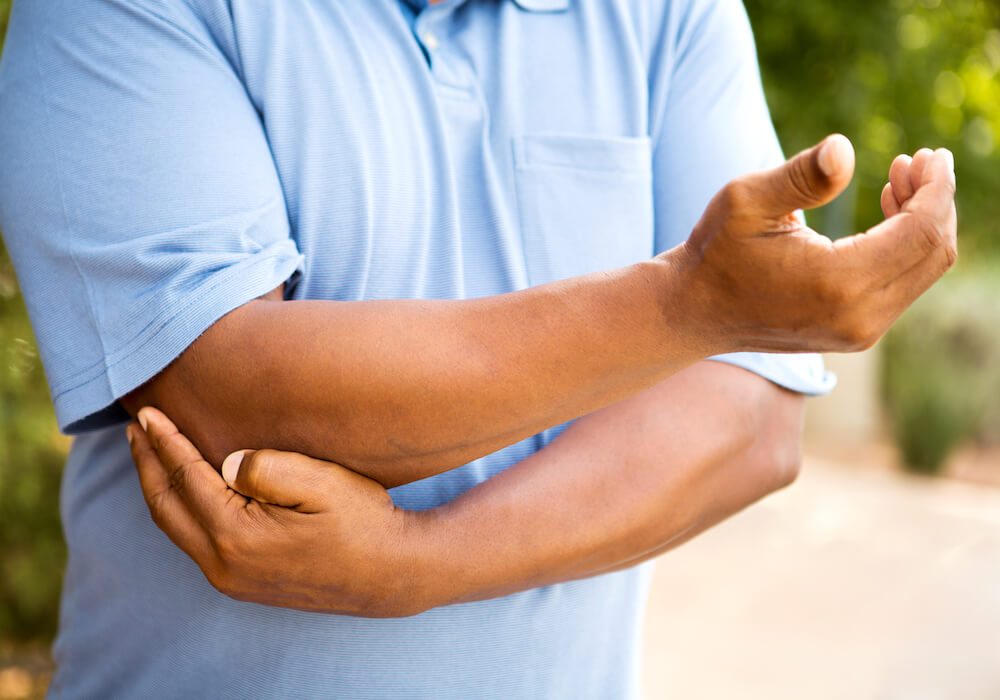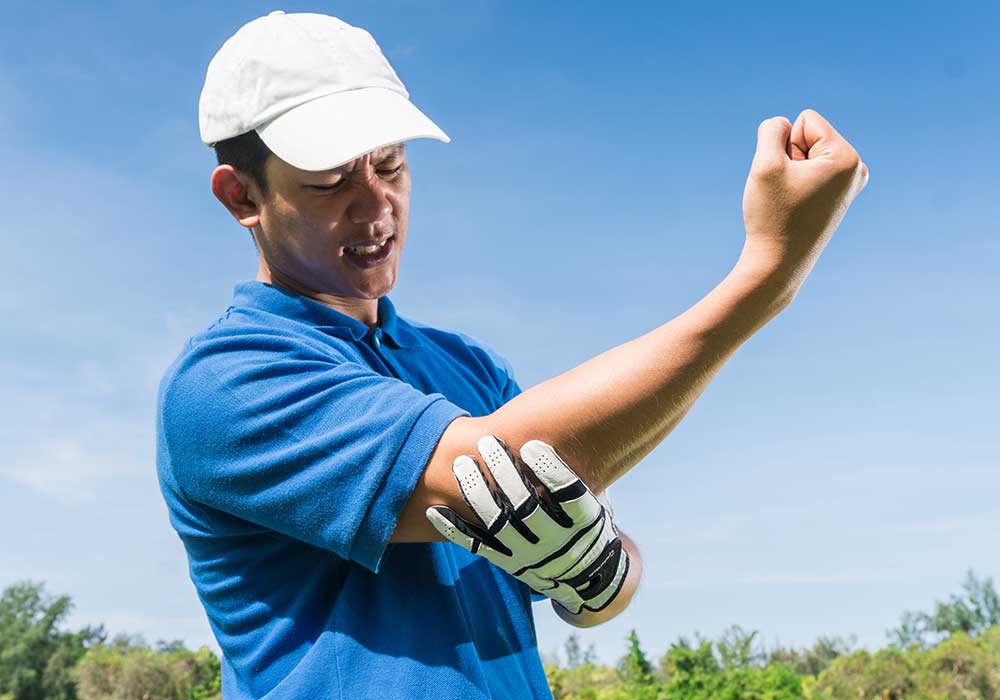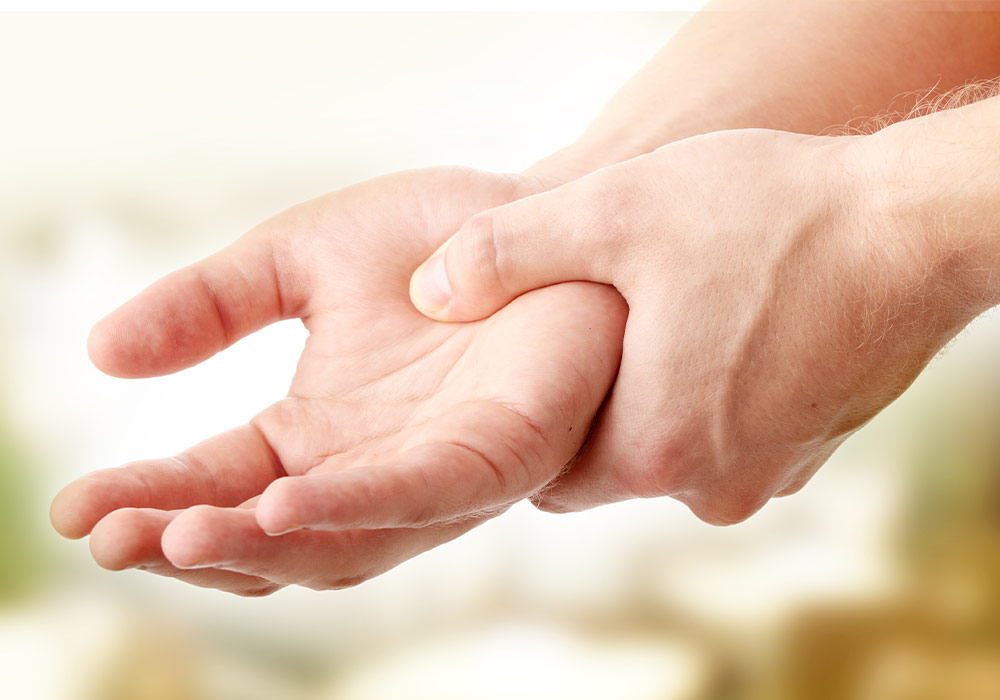THIS POST IS PART OF THE ULTIMATE GUIDE TO HAND, WRIST AND ELBOW INJURIES
The elbow is made up of bones, ligaments, muscles and tendons. Tendons are flexible, tough bands of tissue that connect muscles to bones. When tendons become inflamed, torn or irritated, the condition is referred to as tendonitis.
There are two forms of tendonitis involving the elbow:
- Lateral epicondylitis, also known as tennis elbow, which causes pain on the outer side of the elbow joint.
- Medial epicondylitis, also known as golfer’s elbow, which causes pain on the inner side of the elbow.
What causes elbow tendonitis?
Tendonitis in the elbow can occur if you repeatedly use the elbow by rotating the forearm muscle tendons. There are additional contributing factors that may lead to elbow tendonitis.
- Muscle weakness or imbalances
- Overuse or overload of the elbow joint
- Tight grip on golf or tennis equipment
- Incorrect technique
- Overtraining, excessive wrist action
- Repetitive motion from everyday work
- Falling on an outstretched arm
- Arthritis
If you notice pain in your elbow or can’t keep your arm completely straight after an injury, request an appointment with one of our hand, wrist and elbow specialist.

What are the symptoms of tendonitis in the elbow?
In general, the main symptom of tennis elbow and golfer’s elbow is pain, which may radiate into the upper and lower arm or fingers.
Additional symptoms include:
- Stiffness in forearm
- Weakness in arm
- Tingling
- Tenderness
How do you treat tendonitis in the elbow?
There are a few things you can do to treat tendonitis in the elbow at home. “Oftentimes pain worsens first thing in the morning after sleep,” said Dr. Robert Falender, an OrthoIndy hand, wrist and elbow specialist. “If pain persists but not to the point that it’s unbearable, try a wrist splint or a tennis elbow strap, which are both available at your local drugstore.”
If you’re not able to get to a local drugstore, consider one of the quick fixes below before contacting your doctor for help.
- Rest. Stop the overuse of the muscle group that aches.
- Stretch. Stretching out the muscles can sometimes bring relief to the elbow.
- Brace. If you wear a brace, this keeps the muscles still, allowing time to heal.
- Elevate. You can reduce swelling by elevating your elbow or propping it up.
Typically, tendonitis in the elbow can be treated successfully with rest, physical
- Corticosteroid injections to reduce inflammation
- Surgery
- Plasma-rich protein injections
“Make an appointment with a specialist if trauma caused the pain in your elbow. Especially, if there is any muscle deformity,” said Dr. Falender. “If you have any numbness in your fingers or loss of elbow motion, then it’s time to see a specialist.”
What happens if tendonitis goes untreated?
If tendonitis goes untreated, it may become chronic or lead to weakening of the tendon. Surgery is rarely needed to treat tendonitis. However, if there is significant tendon damage, large tears from a sudden injury and other damage, surgery may be necessary.
How do you prevent tendonitis in the elbow?
In many cases, tennis elbow or golfer’s elbow can be avoided. A few simple precautions can be done to help prevent tendonitis in your elbow.
- Warm-up and cool down before any strenuous exercise.
- Avoid activities where you are reaching over your head for long periods of time.
- Improve your technique and consider taking lessons from an expert.
How long does tendonitis in the elbow take to heal?
Depending on the severity of your condition, you should start to feel better in a few weeks with home treatment. However, if your symptoms do not improve after six to eight weeks of home treatment, contact your doctor.
People recovering from surgery are typically able to return to normal activities in 2 to 6 weeks, return to work between 3 to 12 weeks and sports in 4 to 6months. However, if the condition is severe or chronic, complete healing can take up to six months.
PHYSICAL THERAPY EXERCISES FOR TENNIS ELBOW
MAKE AN APPOINTMENT WITH AN ORTHOINDY HAND SPECIALIST
Schedule an appointment
Your well-being is important to us. Click the button below or call us to schedule an appointment with one of our orthopedic specialists. If your injury or condition is recent, you can walk right into one of our OrthoIndy Urgent Care locations for immediate care. For rehabilitation and physical therapy, no referral is needed to see one of our physical therapists.





